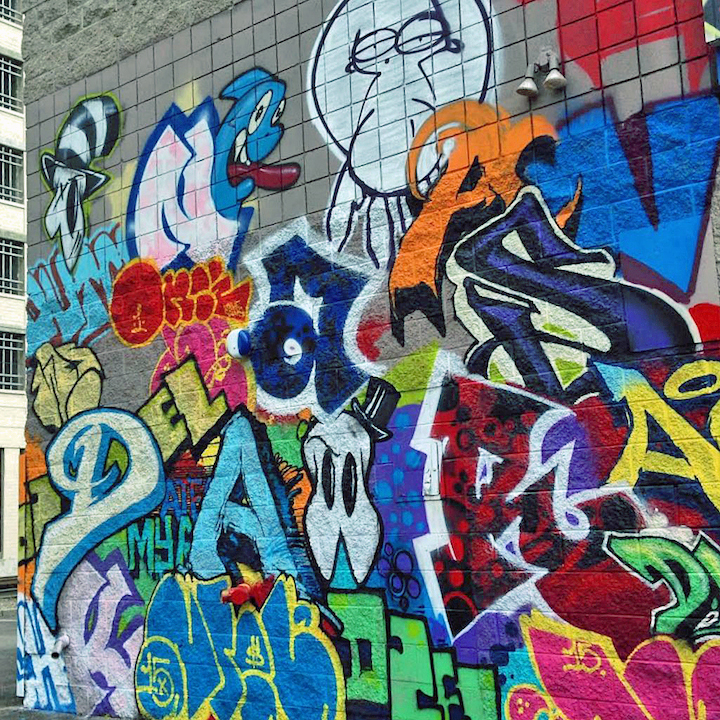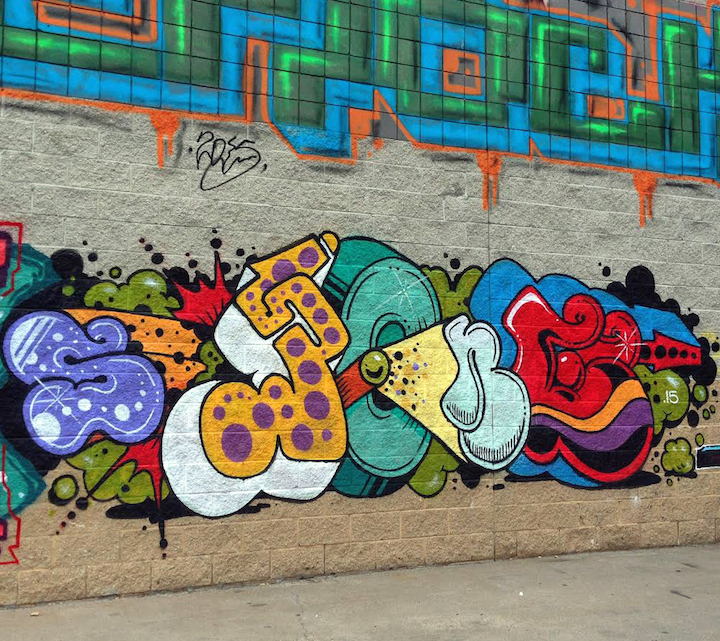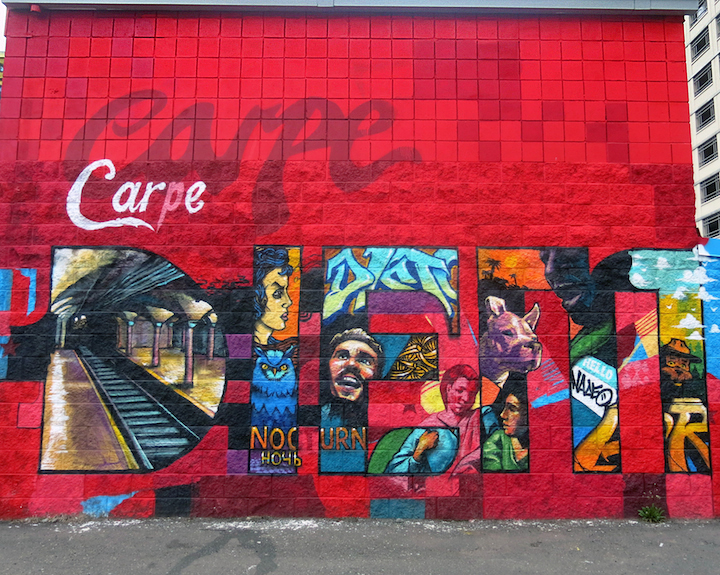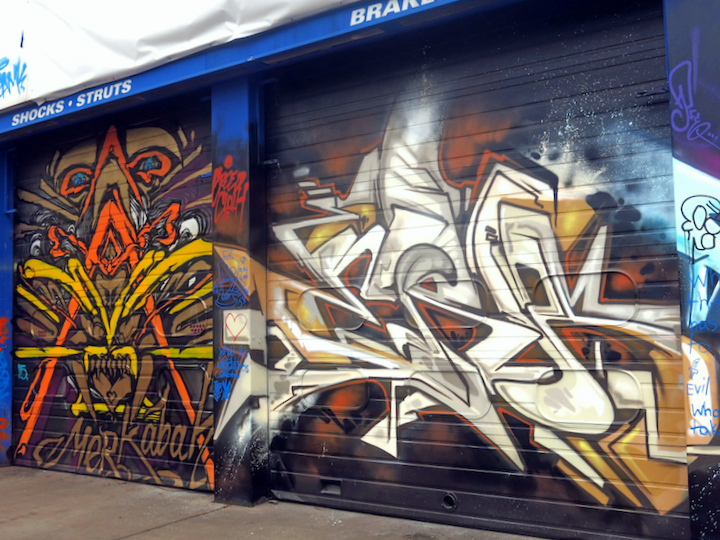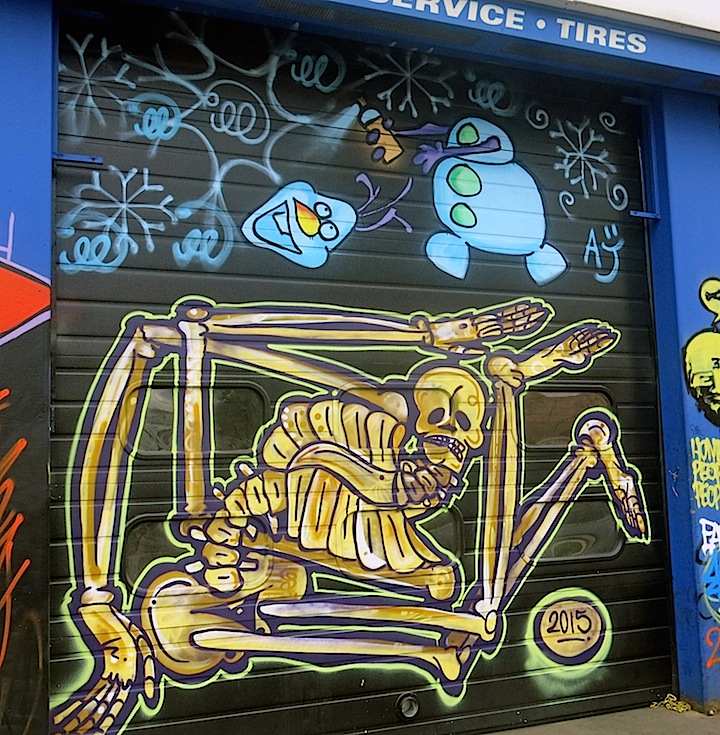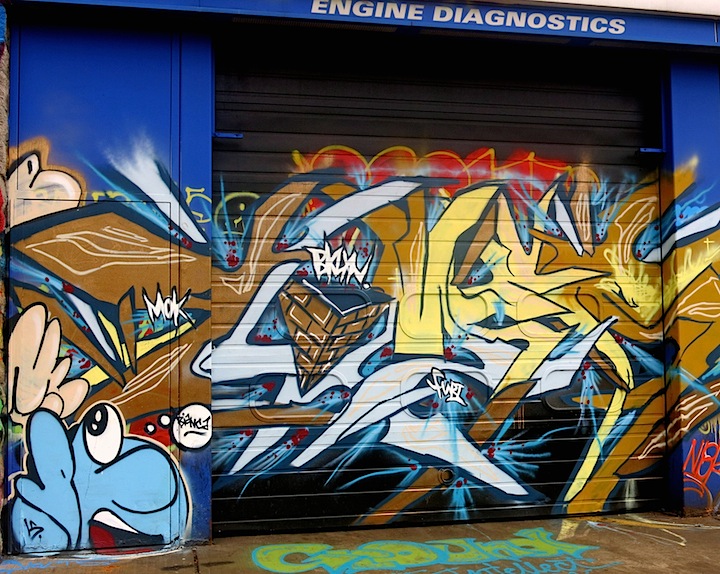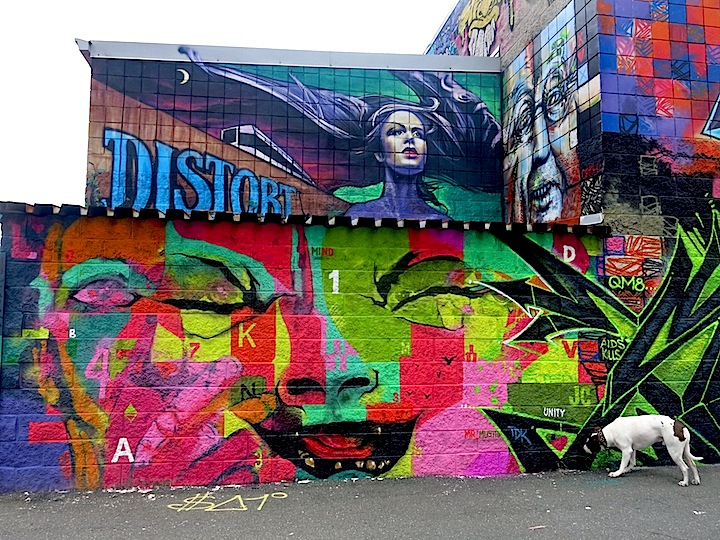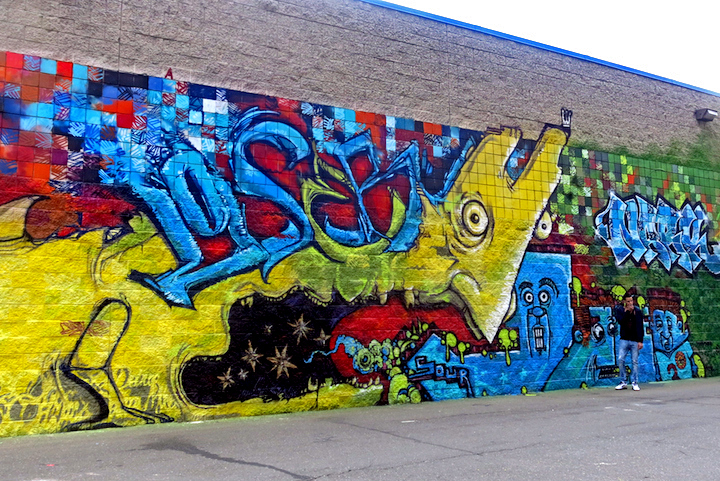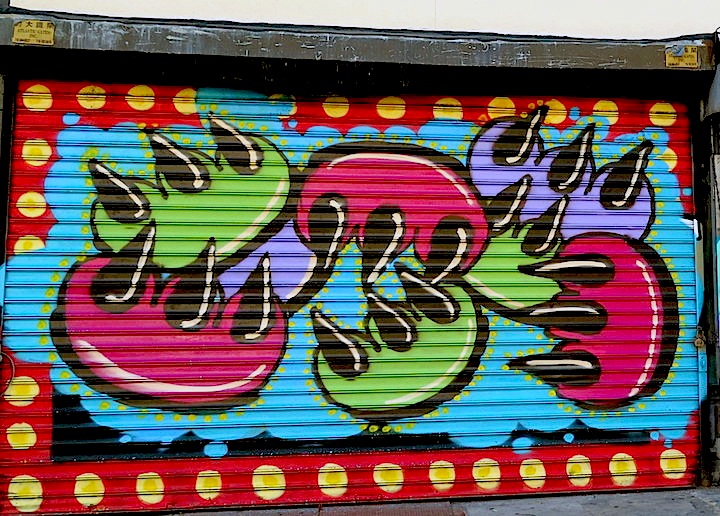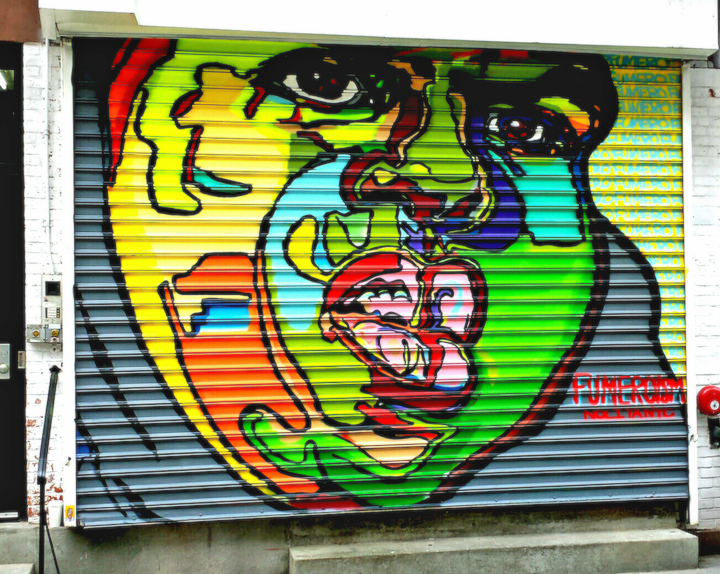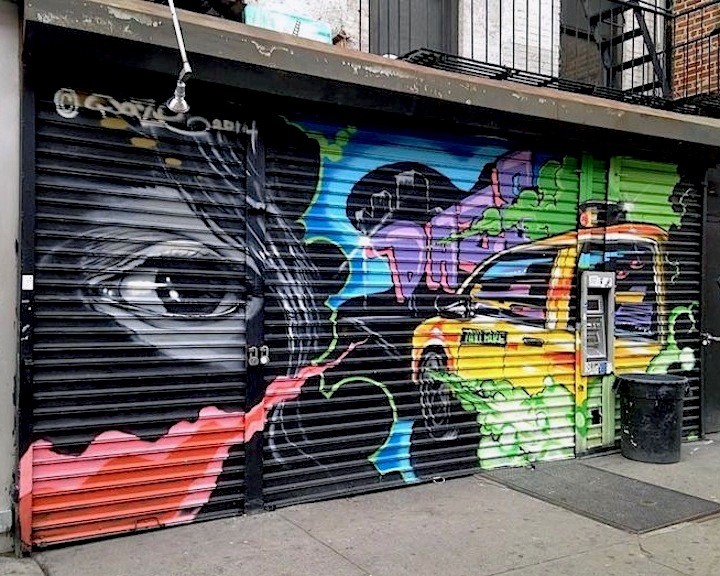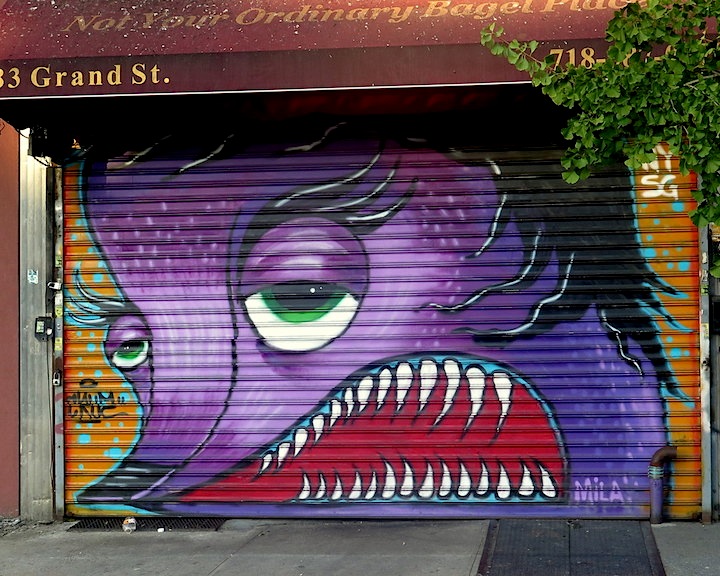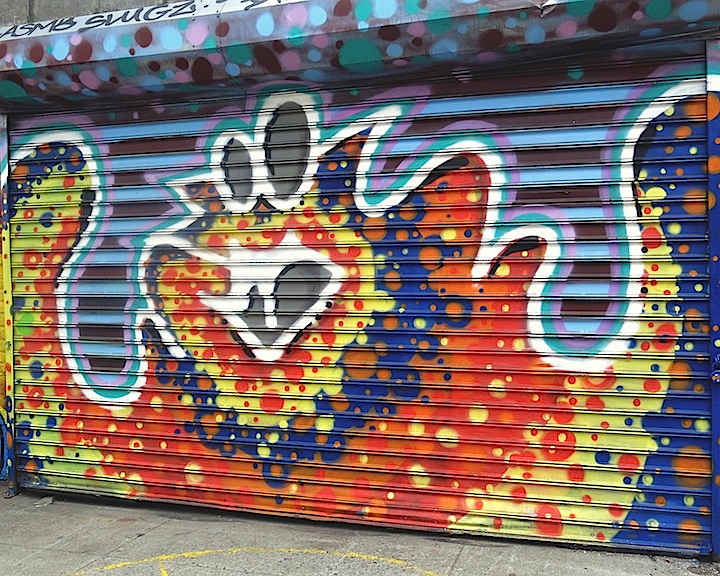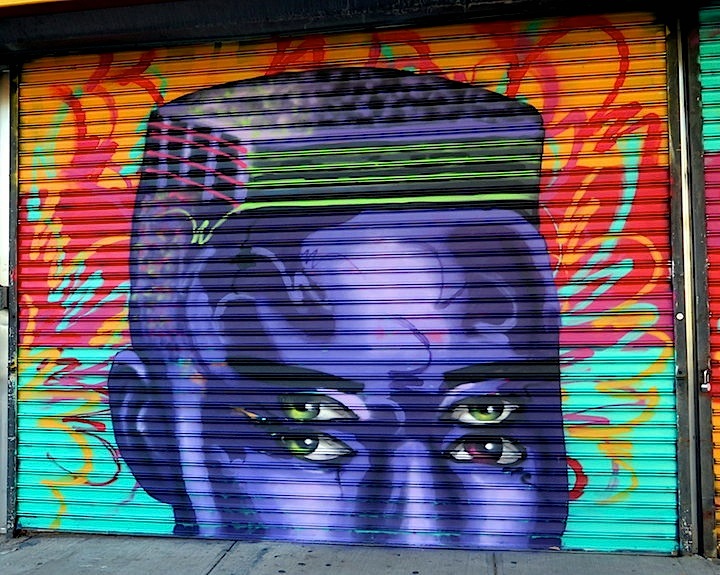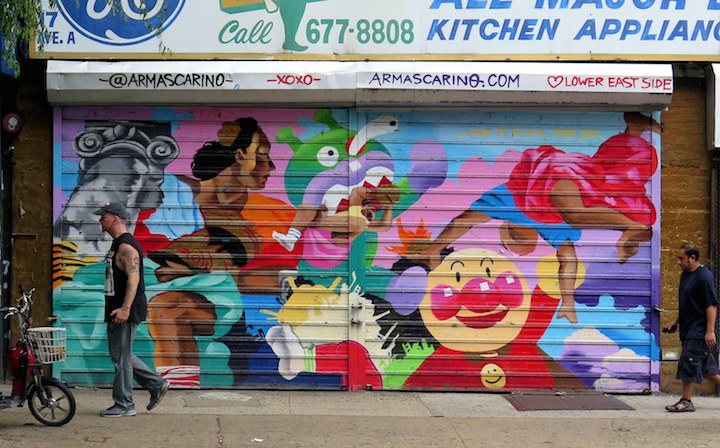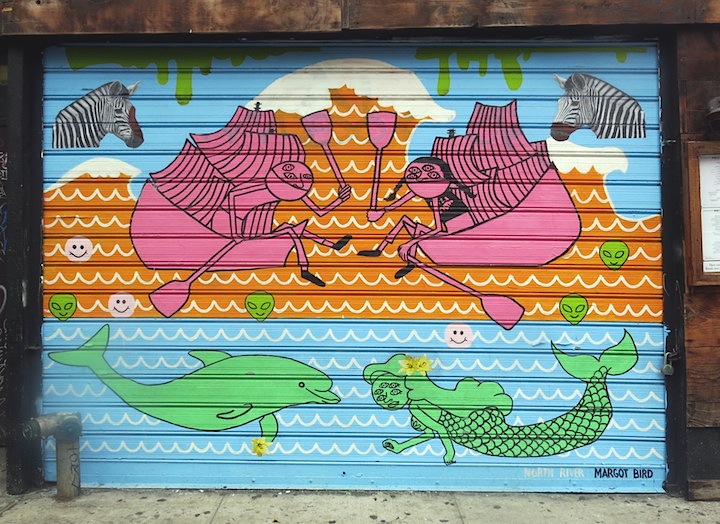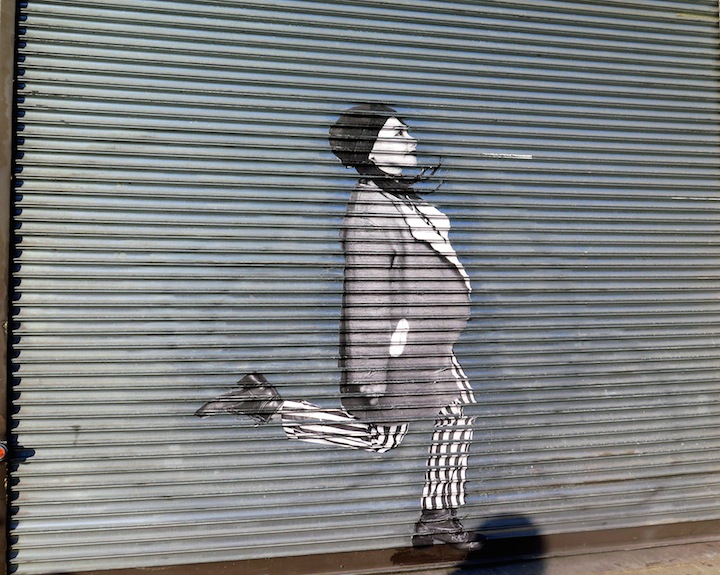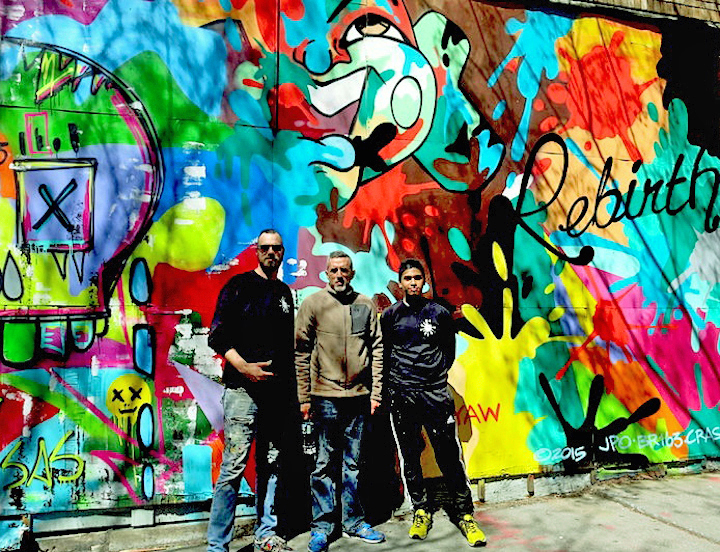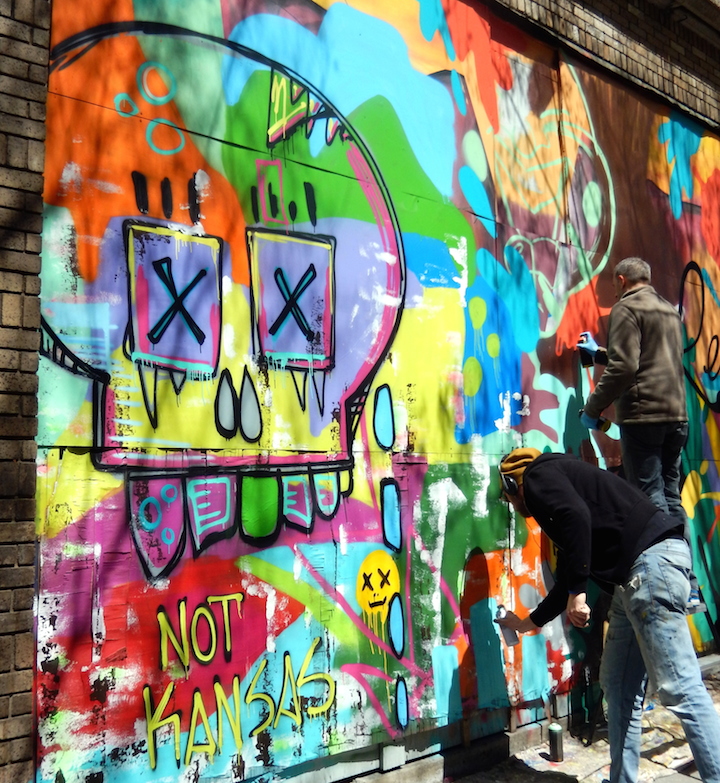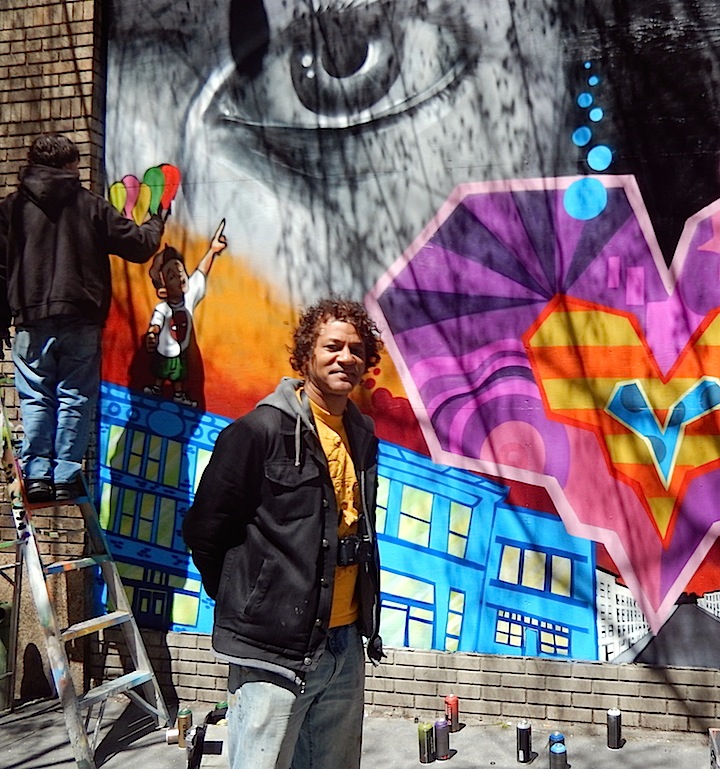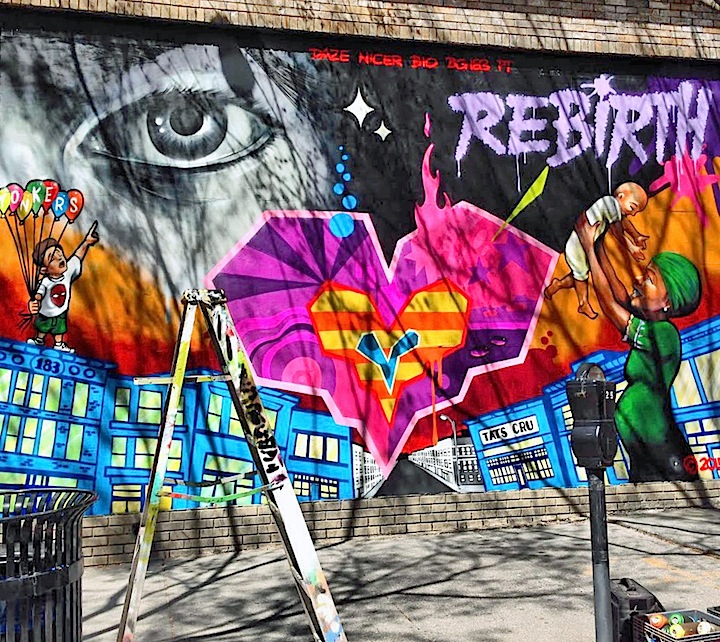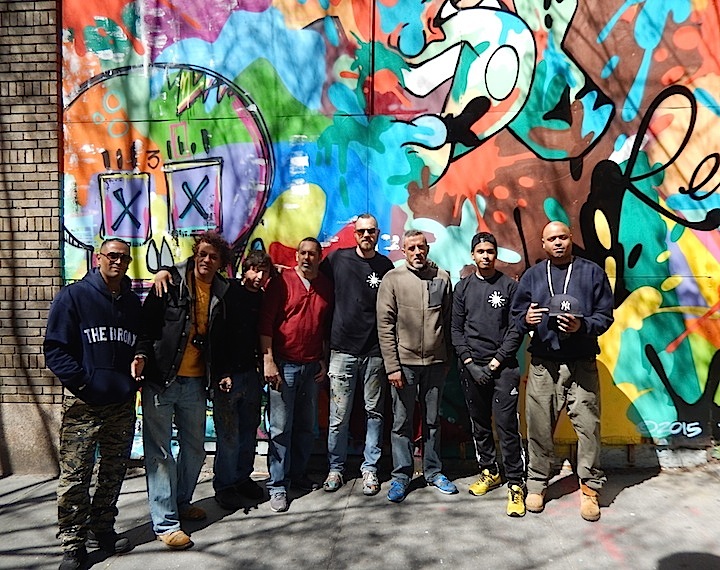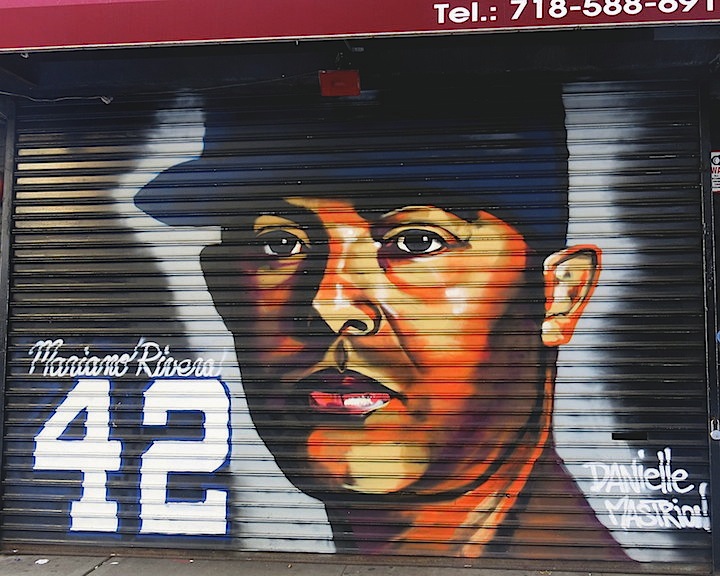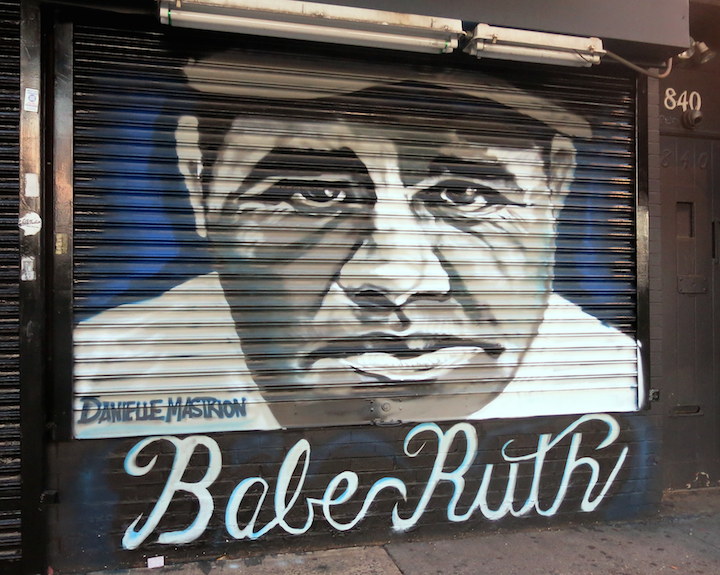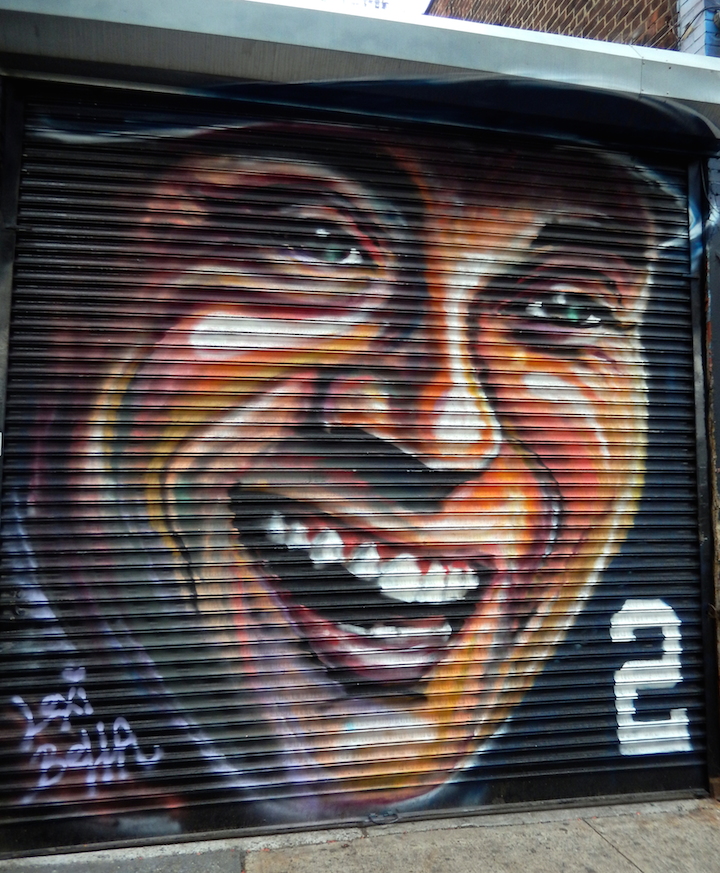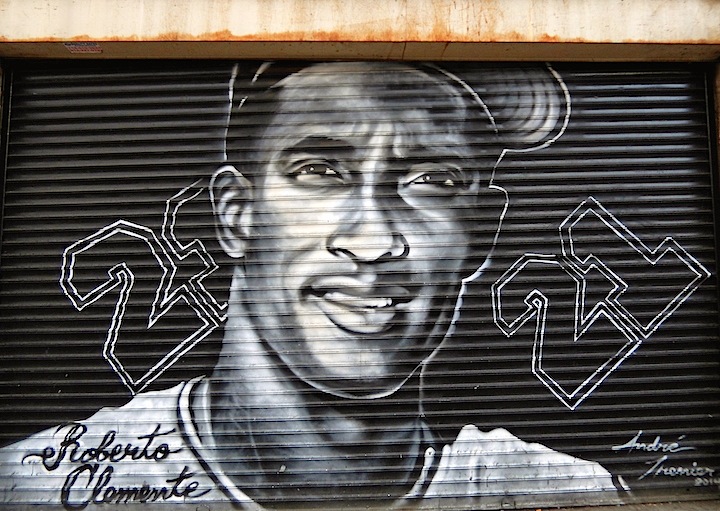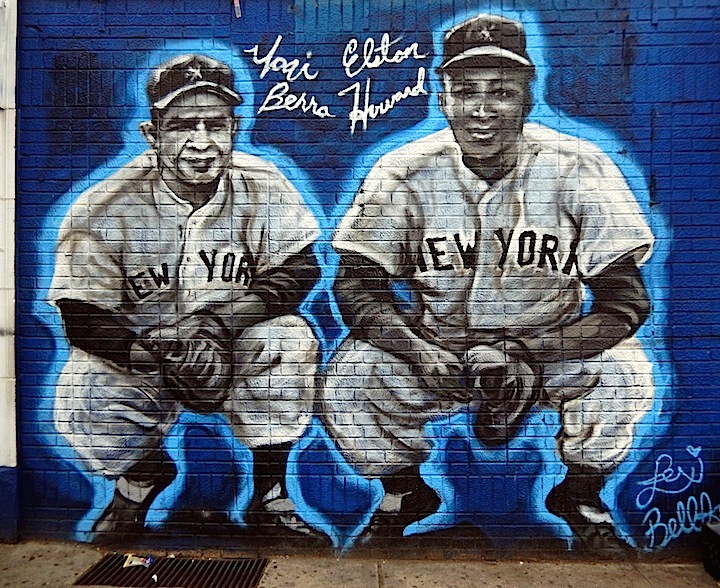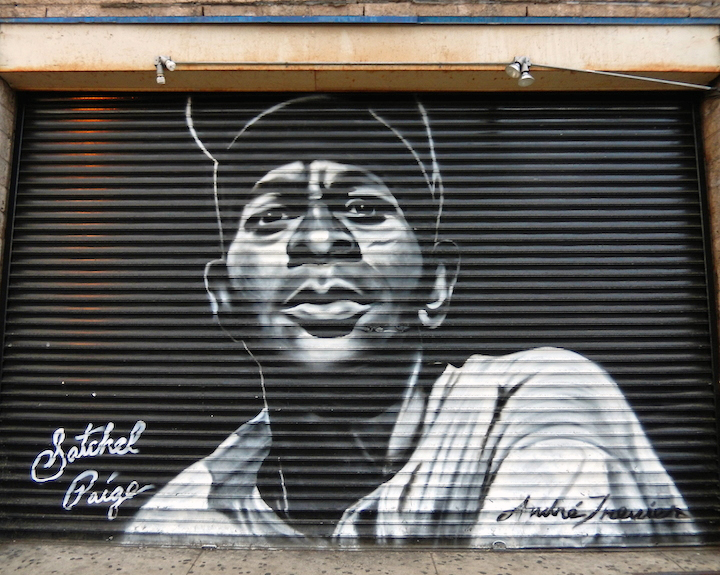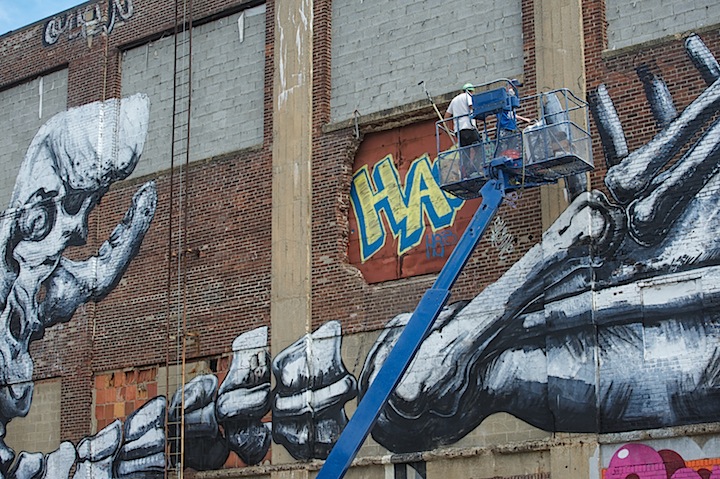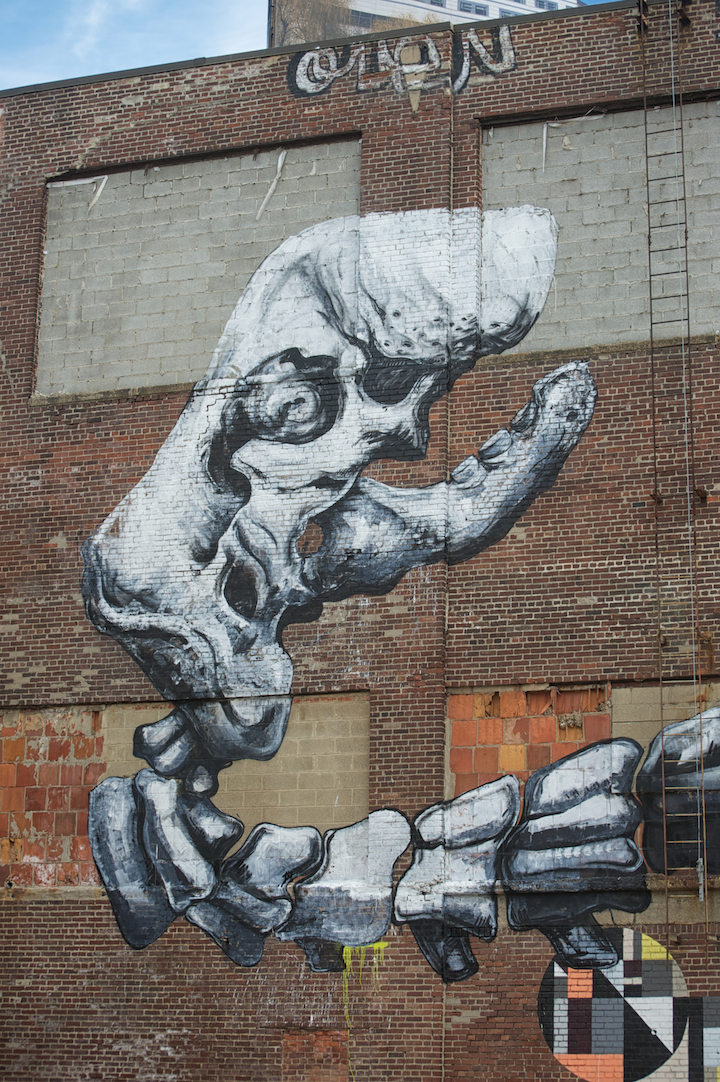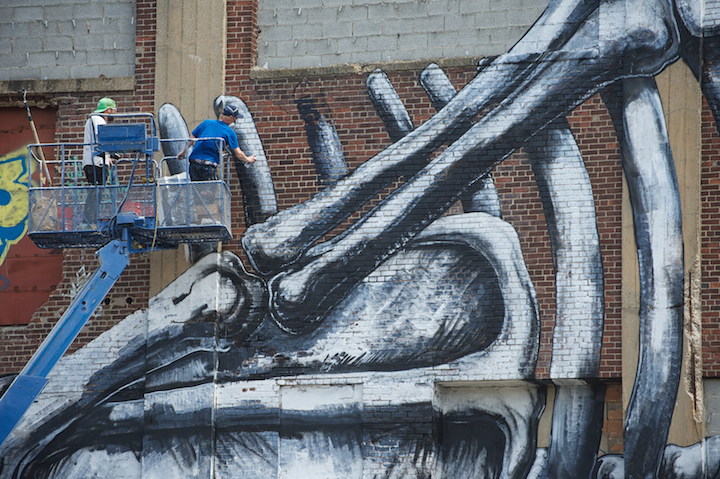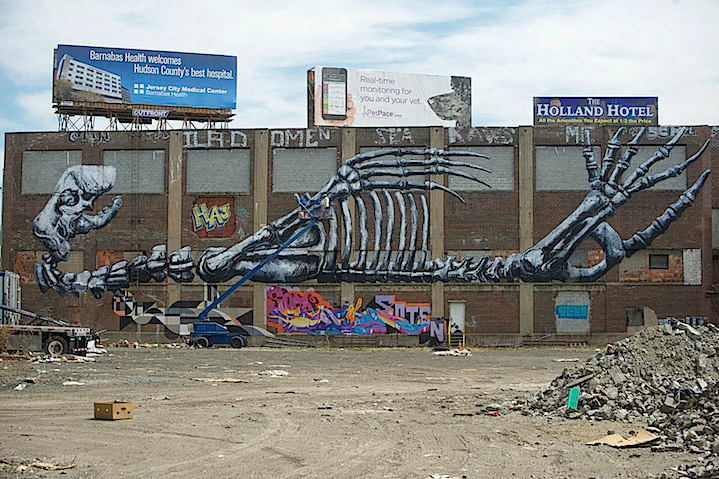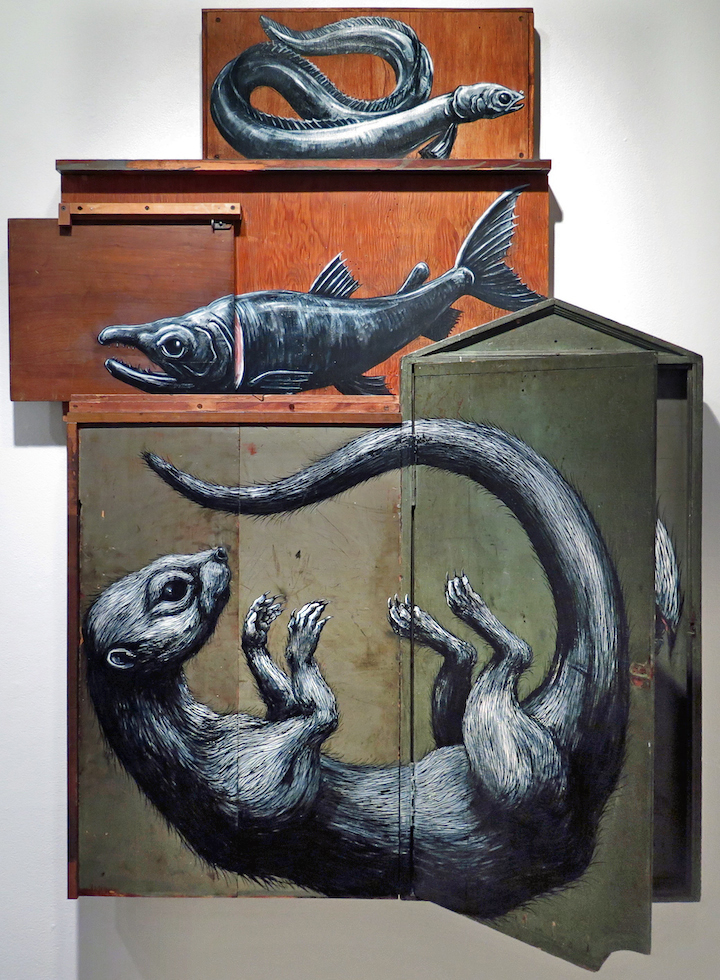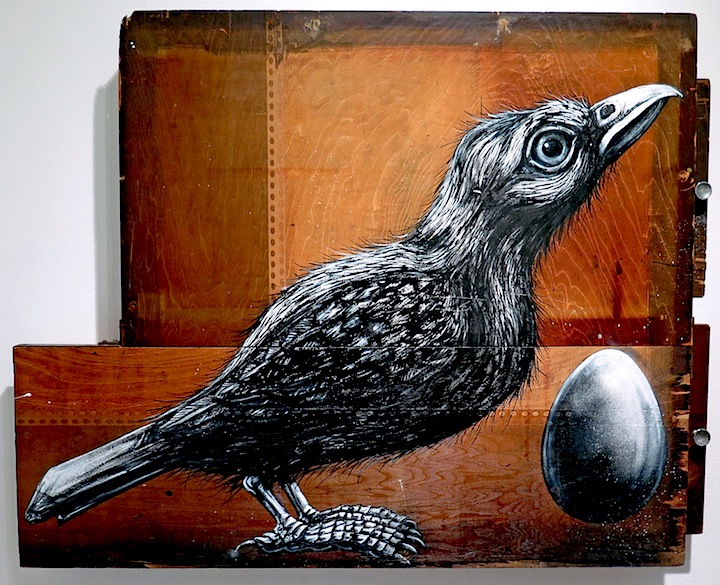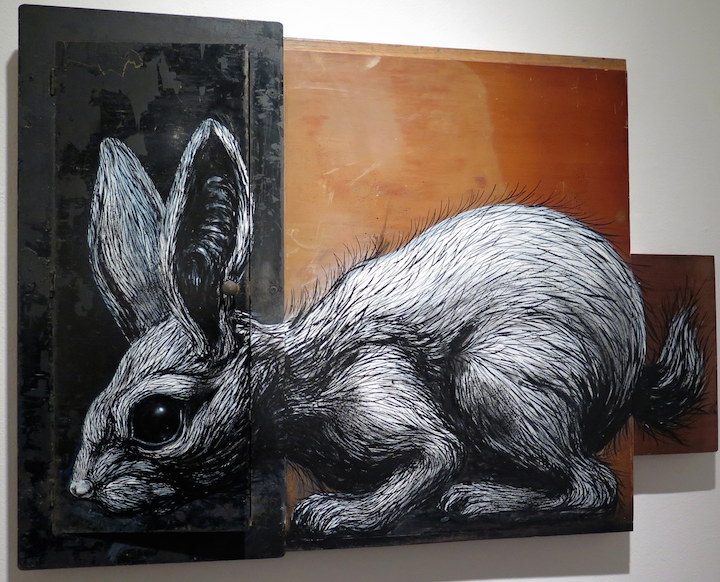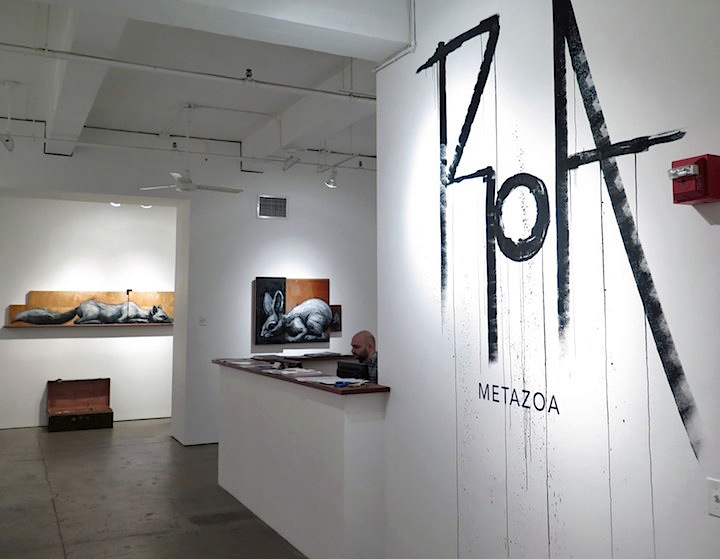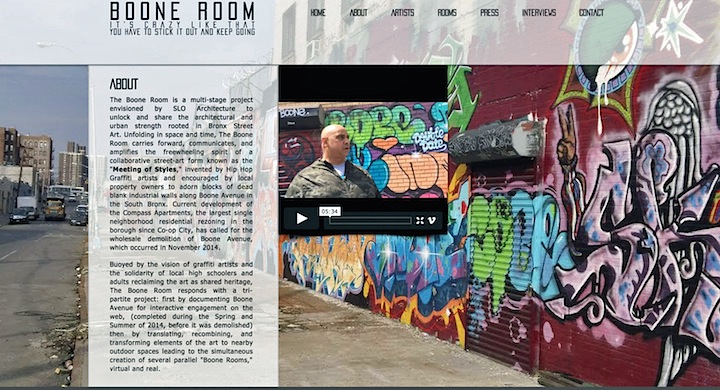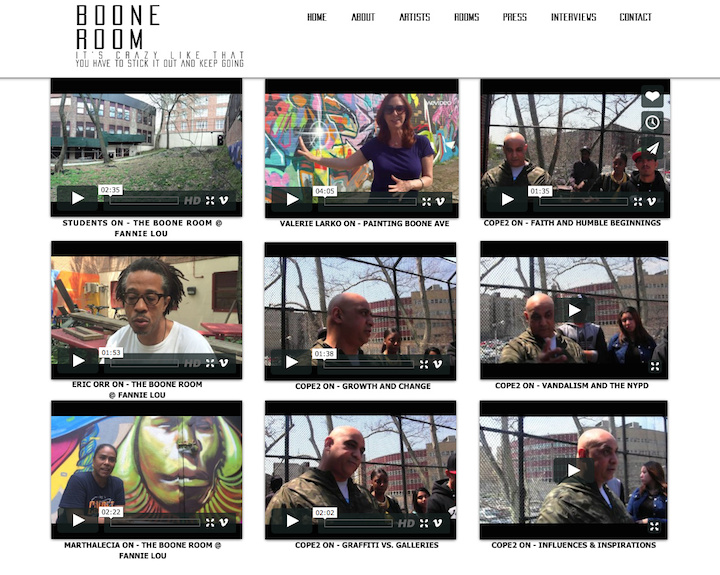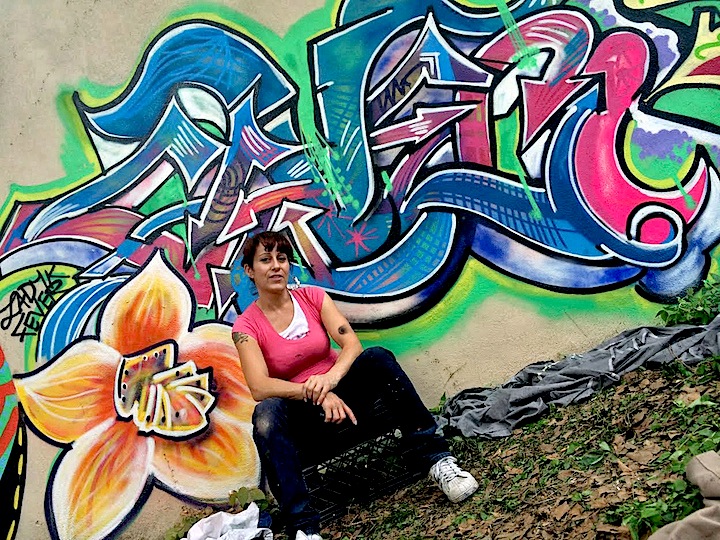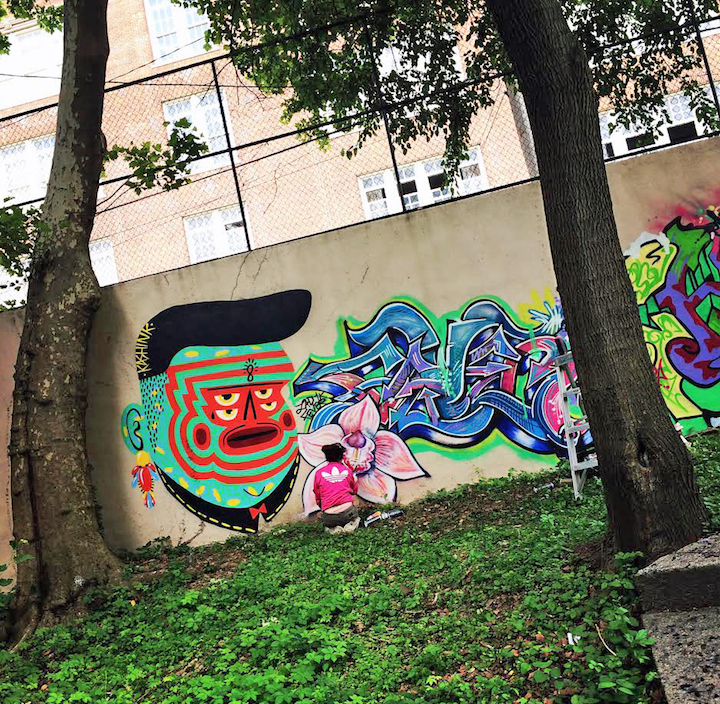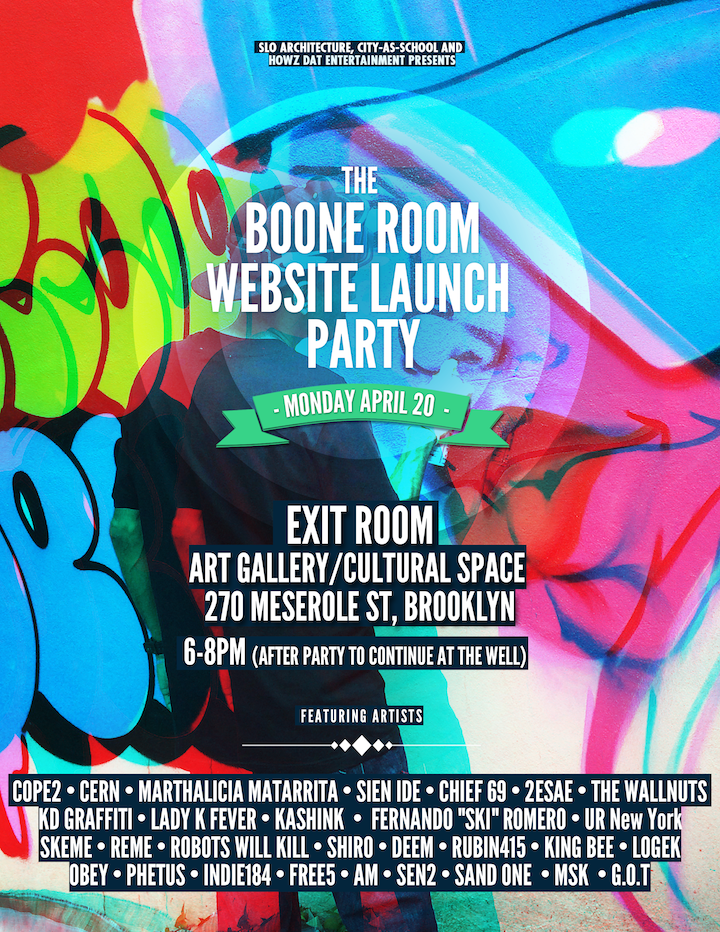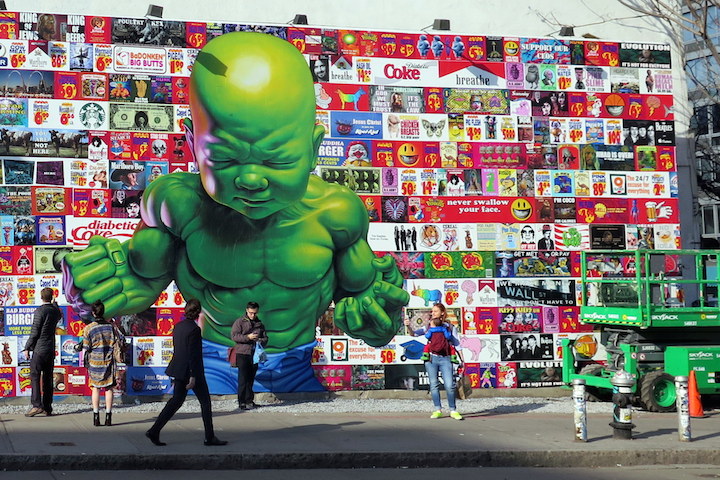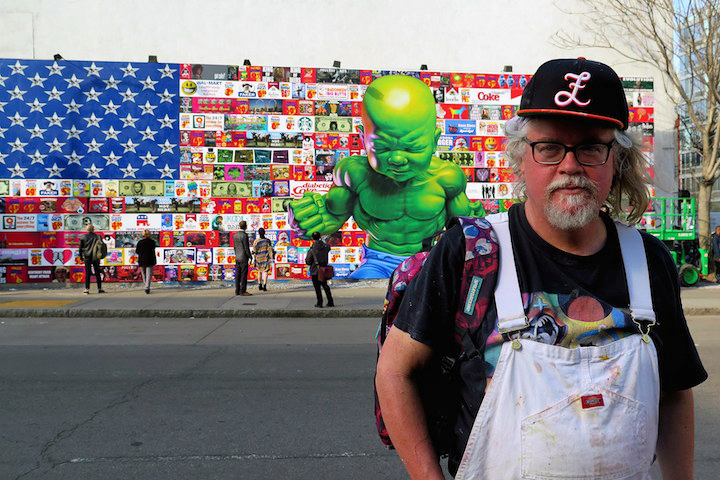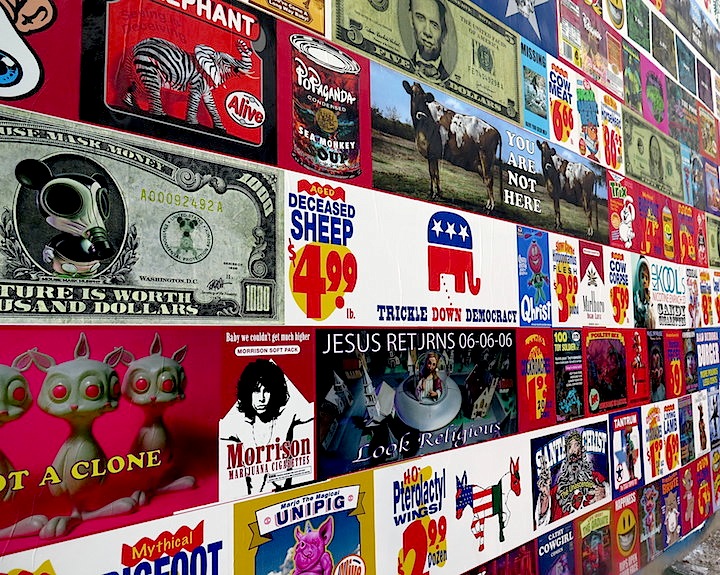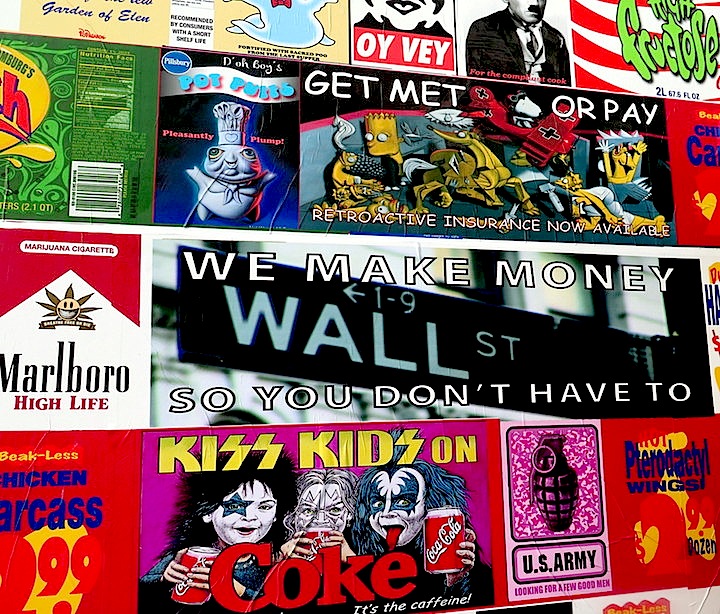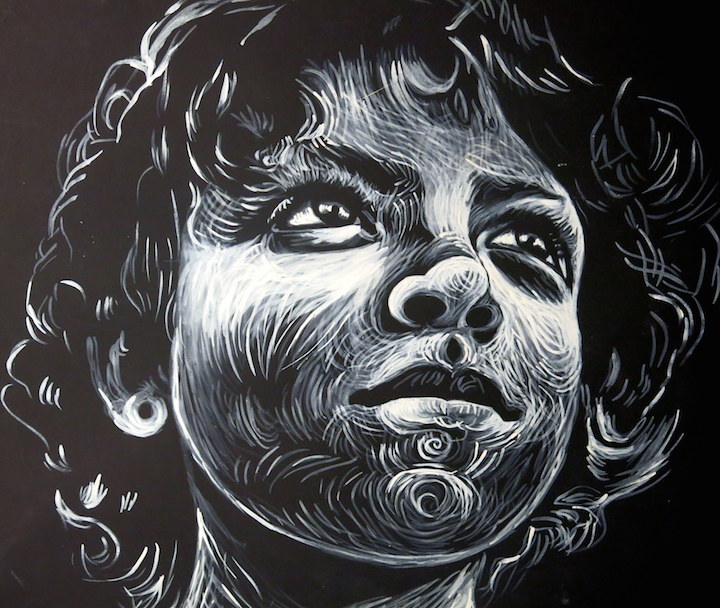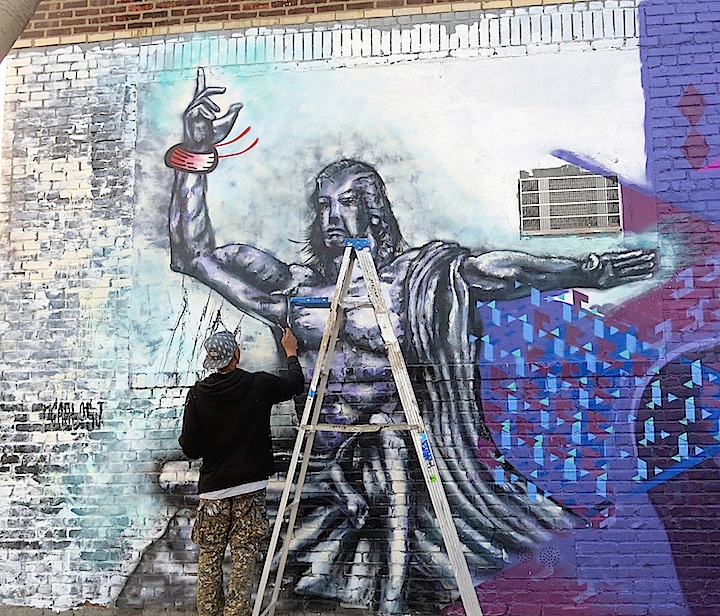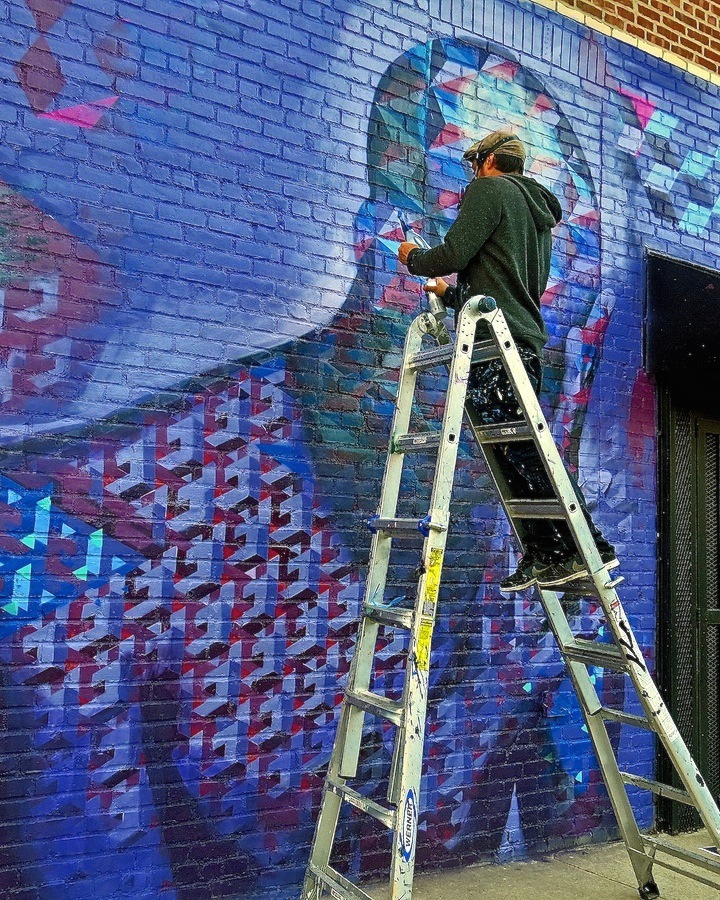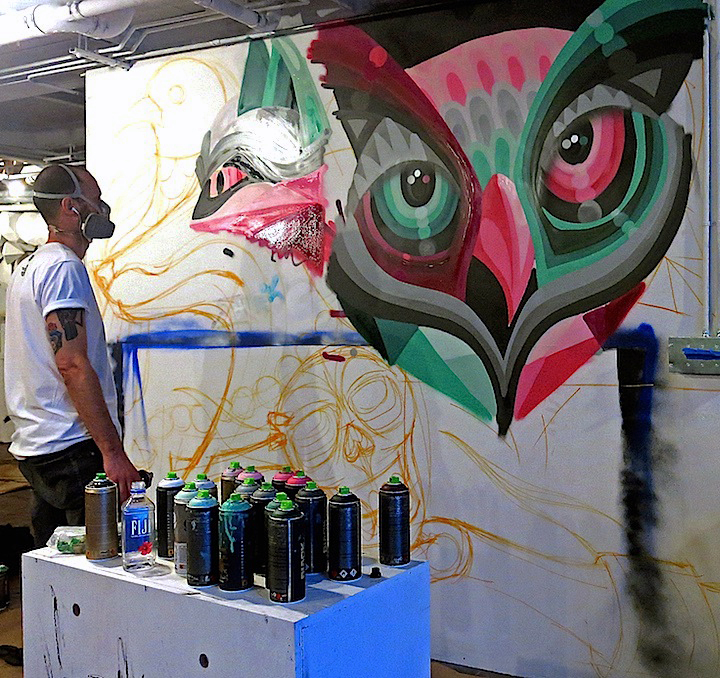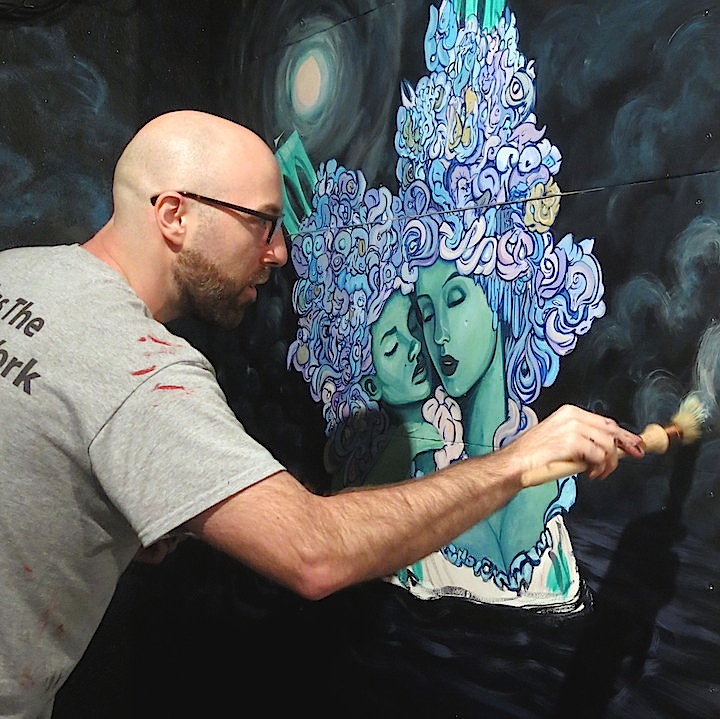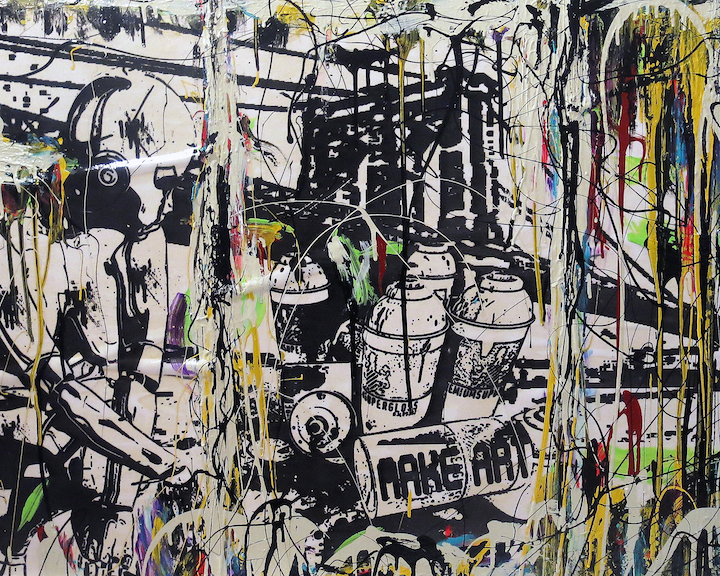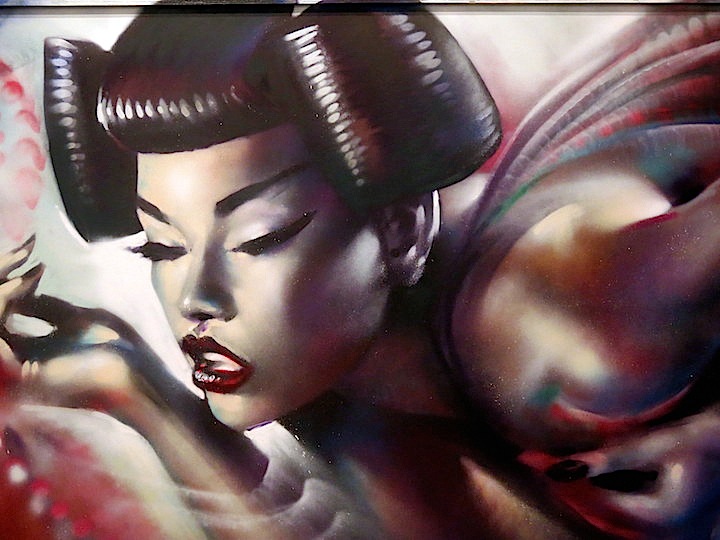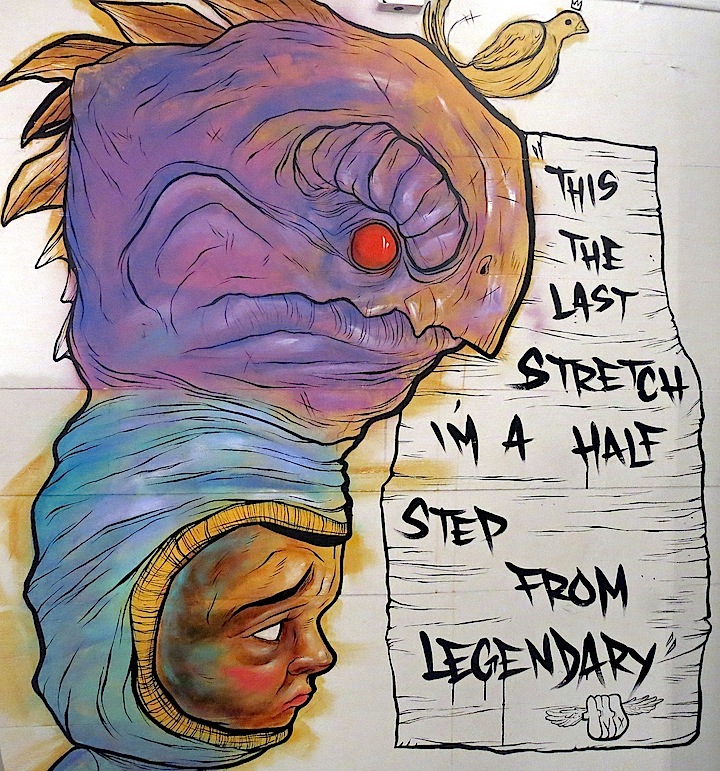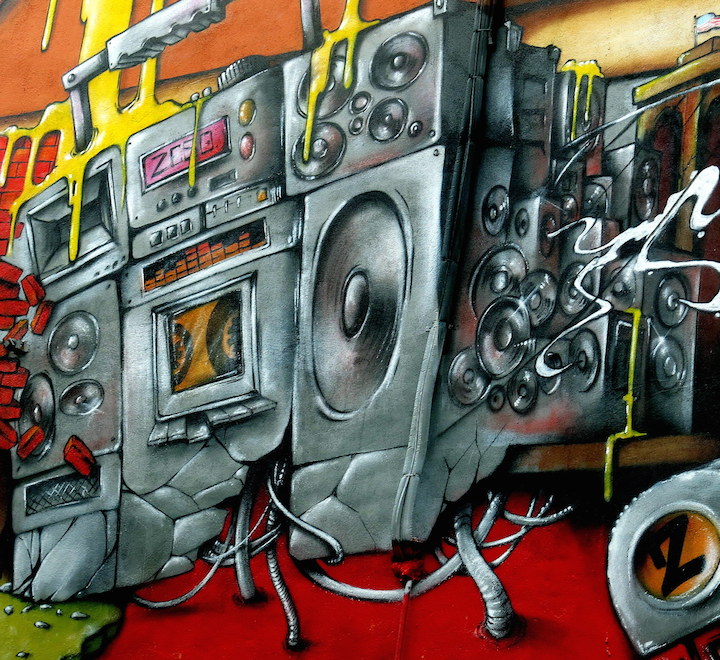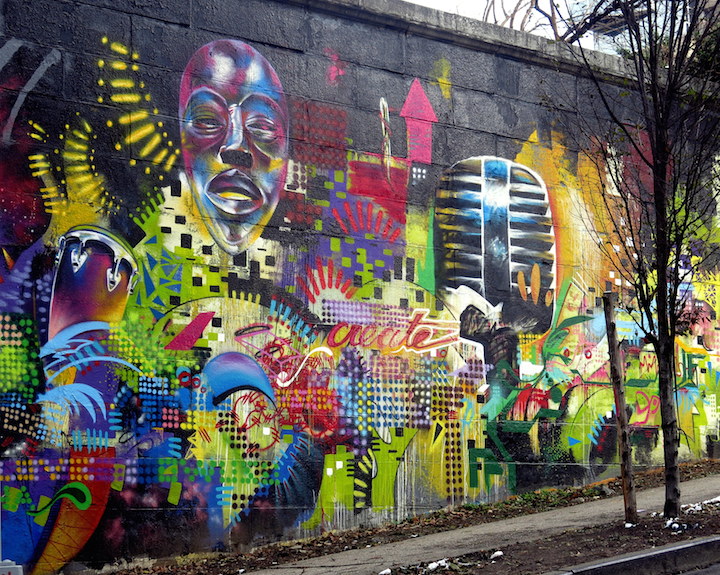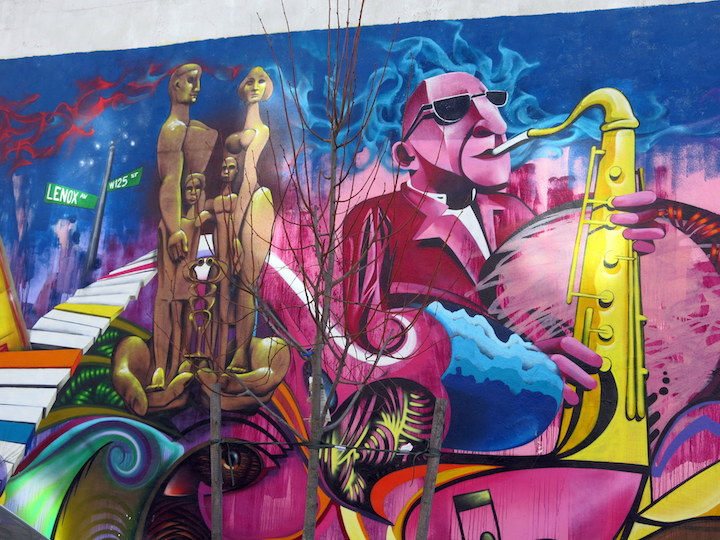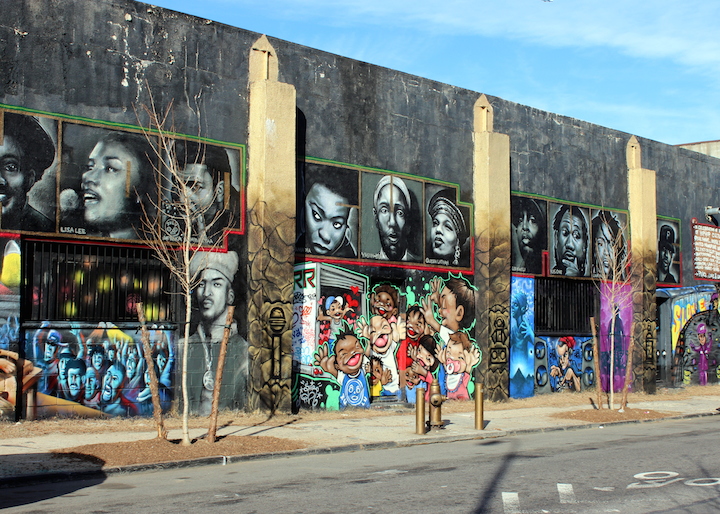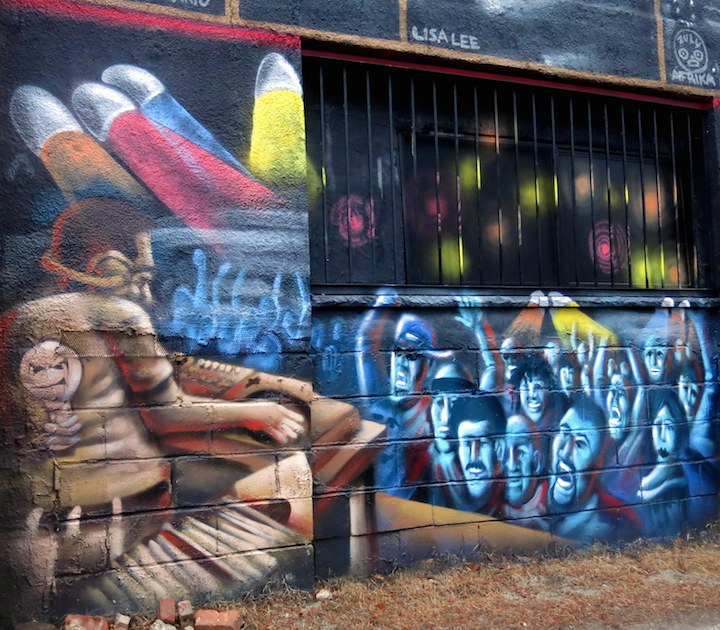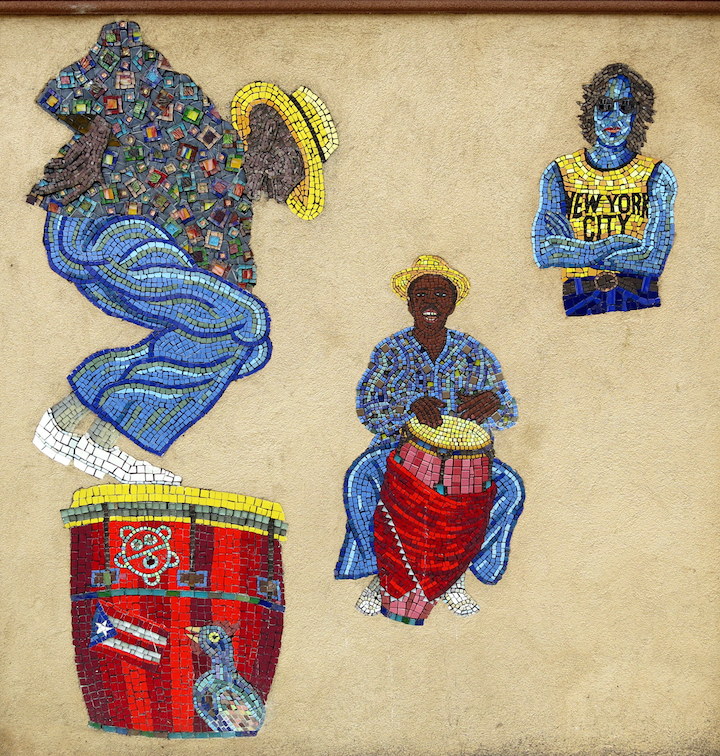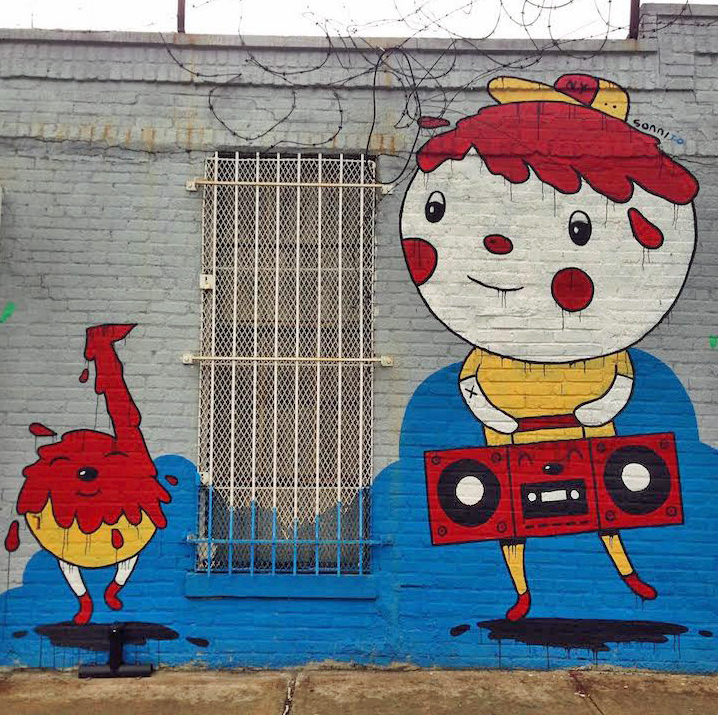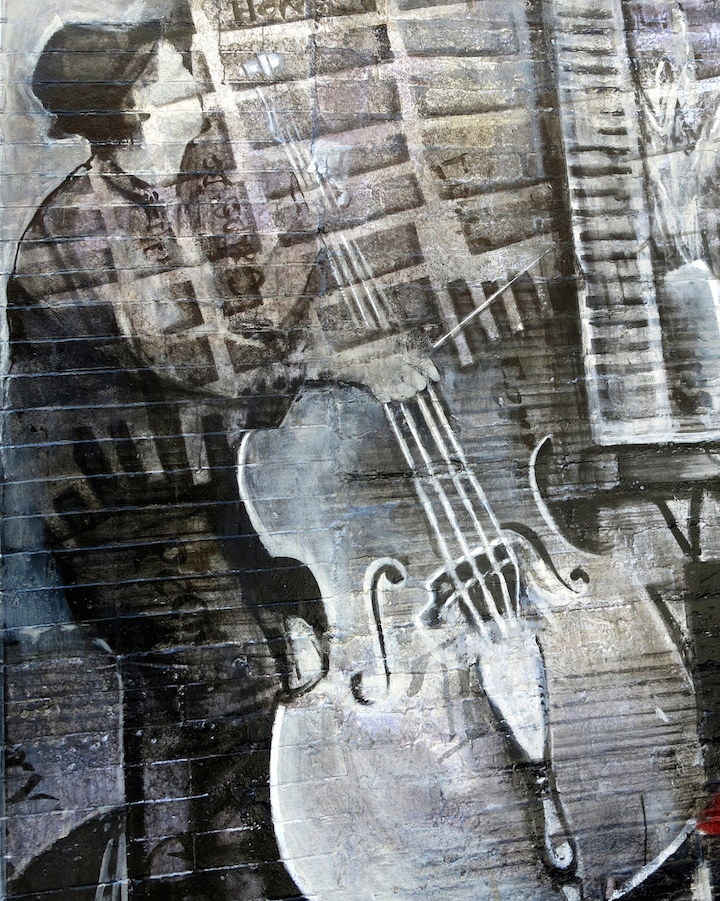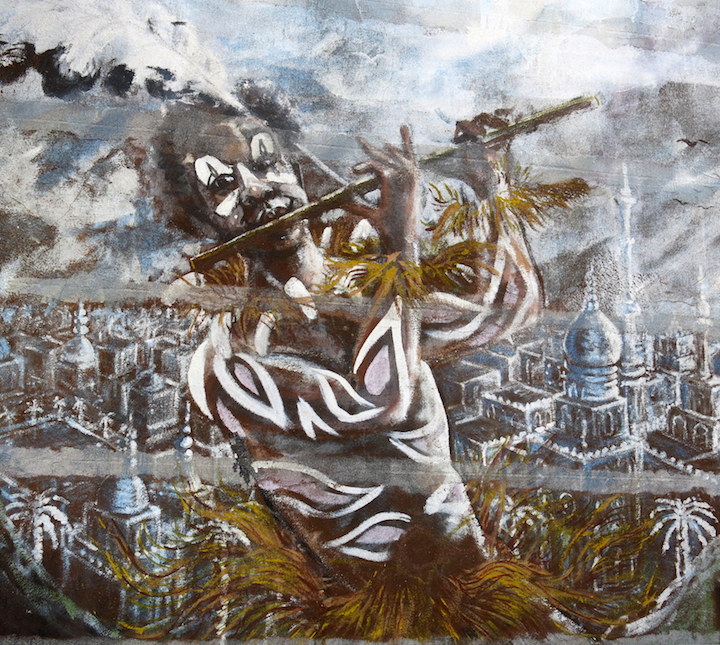Fusing elements of graffiti, painting, drawing and graphic design, N Carlos J creates masterful, atmospheric works both on and off the streets. He is particularly interested in the unconscious as it reflects our inmost emotions. We recently met up with the Brooklyn-based artist and had the opportunity to speak to him.
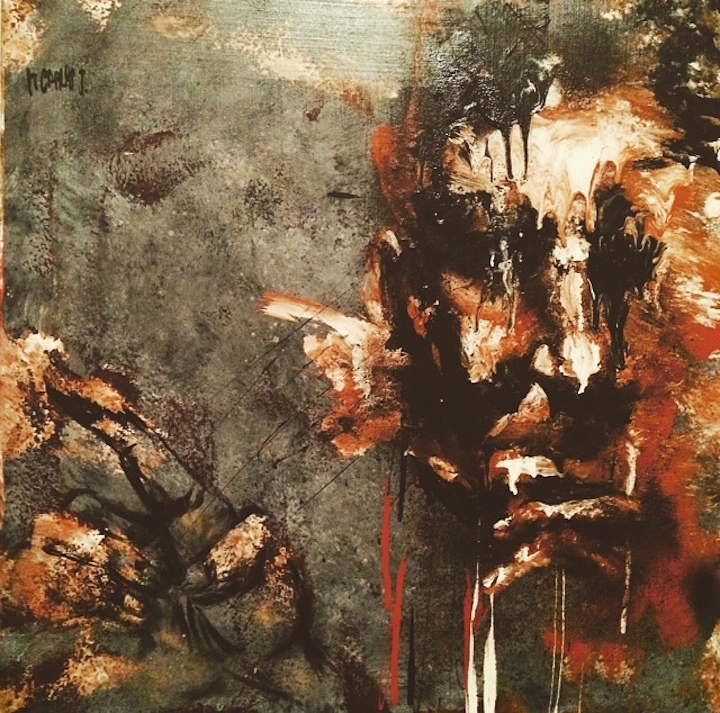
You have quite a presence in Bushwick and beyond these days — painting murals, organizing projects and now curating. Can you tell us something about your background?
I attended Art & Design in the 80’s, and I was around graff heads all the time back then. Like just about everyone else there, I got up when I could.
Do any early graffiti-related memories stand out?
The first time I tried to spray my name, I ended up covering my entire hand with Krylon paint. It was impossible for me to wash it off, and I knew I had better before my mother would see it.
I suppose your mom wasn’t too happy about what you were doing!
She wasn’t. She thought I was crazy!

Did you continue to study art in a formal setting?
Yes. I attended F.I.T., where I earned a Bachelors Degree in Fine Arts. But soon after, I took a 15-year break from art.
Why was that?
I was married, and I felt pressured to earn money.
But these days you are back into it.
Yes, 100% of my time now is devoted to art. When I’m not doing my own art, I am organizing projects, working on commissions or teaching art. And I am busy now curating an exhibit to open next Friday.
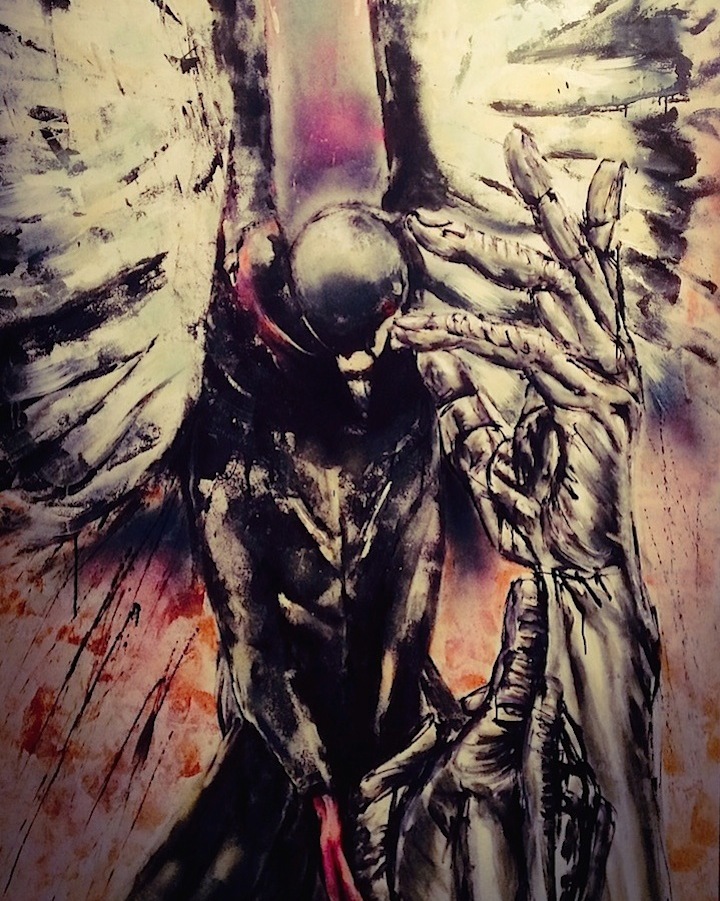
Now that art is playing such a central role in your life, do you feel that your formal art education was worthwhile?
Absolutely. It taught me discipline, and it helped me master technique and color theory.
Any thoughts on the graffiti/ street art divide?
I feel that they must coexist. It is a conversation that we must have.
What do you see as the future of street art?
Street artists are going to continue to treat themselves more like businessmen.
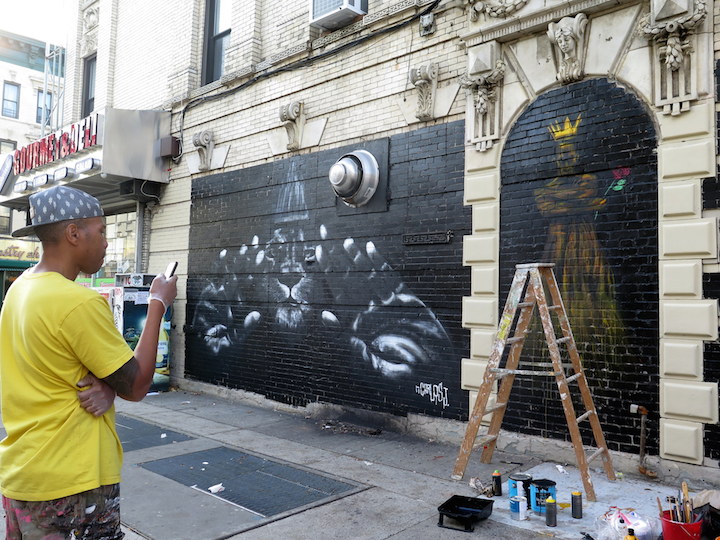
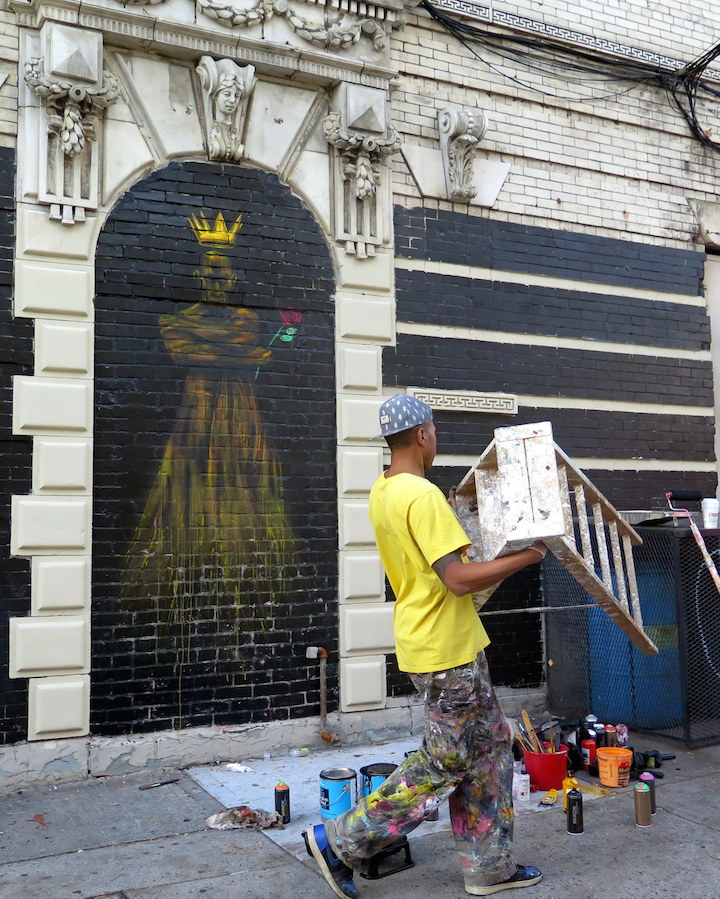
Yes, I can see that happening. But that’s a whole other conversation! How do you feel about the movement of graffiti and street art into galleries?
I love it!
Have you shown in galleries?
I’ve participated in many group shows and I’m working on two solo exhibitions for fall, 2015.
What about the corporate world’s engagement with graffiti and street art? How do you feel about that?
If it pays well enough, I have no problem with it.
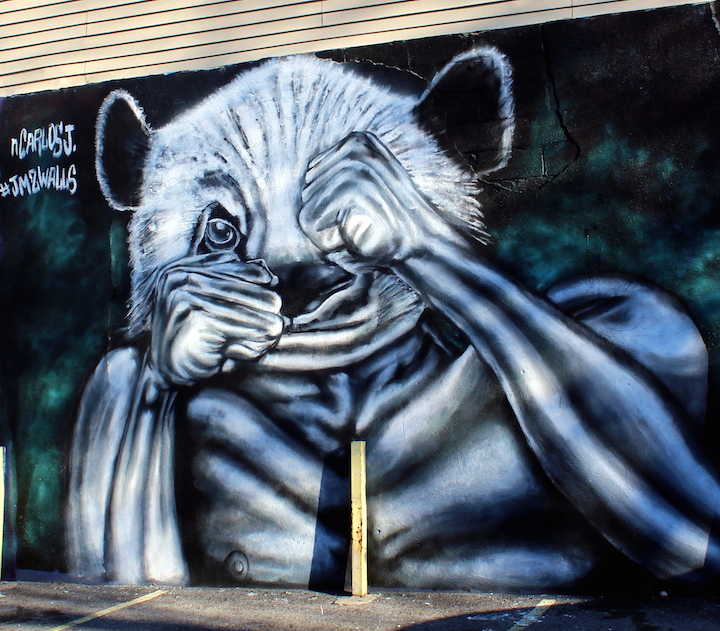
What about the role of the Internet in this scene?
It is a blessing and a curse. It gives us exposure, and that is, of course, a good thing. But it makes it too easy for others to steal styles and ideas from us.
How would you describe your ideal working environment?
Painting outside on a summer day with hip-hop music blasting.
What inspires you these days?
Listening to music by Kendrick Lamar or CyHi the Prynce inspires me. And reading excerpts from books like A Tale of Two Cities or The House of Rothschild gets me in the right space.
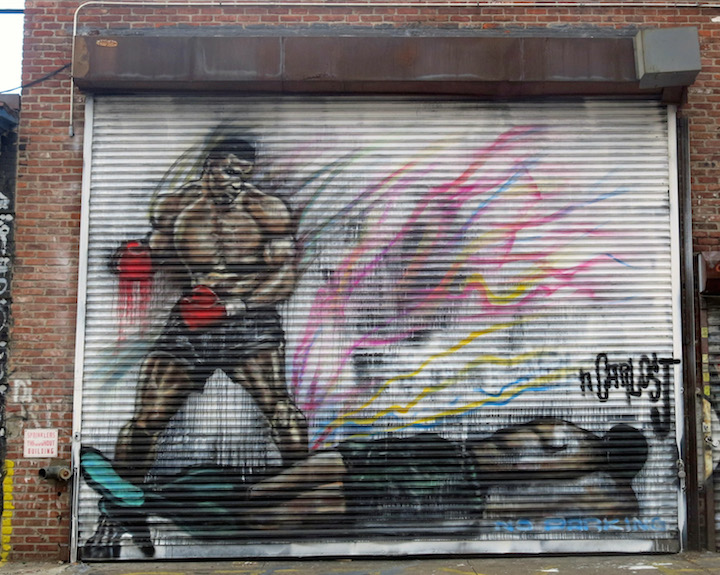
Are there any particular cultures that you feel have influenced your aesthetic?
American pop culture, but Renaissance and post-impressionist painting have also influenced me.
What about artists? Who are some of your favorite artists?
Among those I particularly love are: Borondo, Connor Harrington and Alexis Diaz
Do you work with a sketch in your hand or do you let it flow?
Sometimes I work with a sketch, and sometimes I don’t.
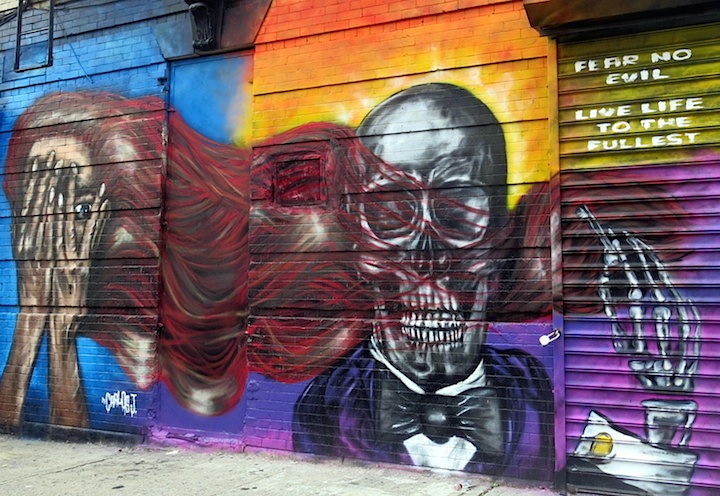
Are you generally satisfied with your work?
No! I am a perfectionist.
How has your work evolved in the past few years?
I tend to more freely fuse figurative and expressionistic elements.
What do you see as the role of the artist in society?
The artist is the keeper of the flame. We are what moves this planet.
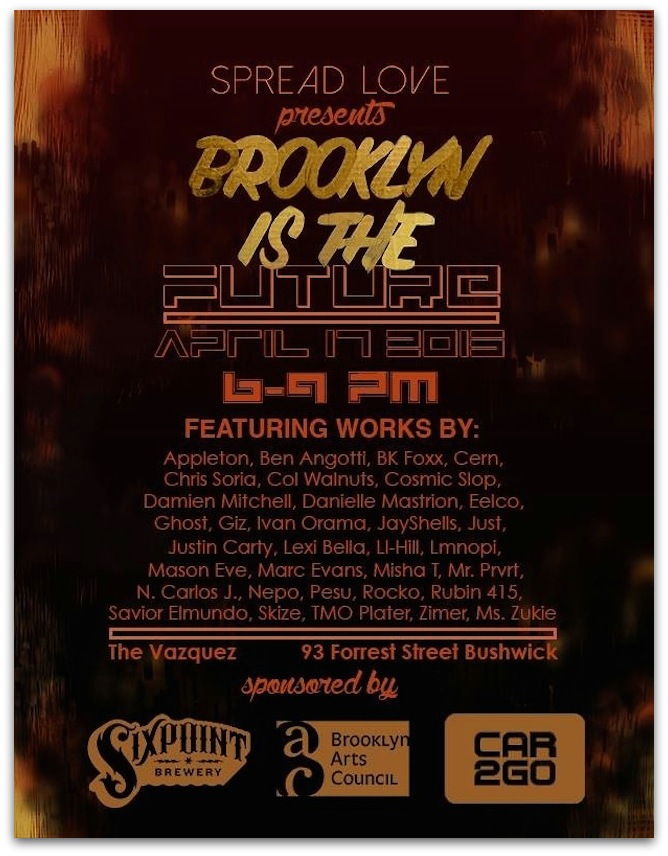
What’s ahead?
I’m currently curating, Brooklyn is the Future, a huge, two-weekend long exhibit and charity event to open next Friday, April 17, at the Vazquez at 93 Forrest Street in Bushwick. Among the three dozen participating artists are: Damien Mitchell, Eelco, Ghost, Li-Hill, Mr. Prvrt, Rocko and Rubin. The artists are asked to envision the future of Brooklyn metaphorically or literally. I am also curating a show called Good Times Bushwick for Bushwick Open Studios opening on Friday, June 5 at Express Yourself Barista. It will include a gallery show, outdoor murals, along with a day party and a barbecue.
Wow! It sounds great! Good luck with it all!
Interview by Lois Stavsky with Houda Lazrak
Photos: 1 and 3 (close-up of panel for Brooklyn is the Future) courtesy of the artist; 2, 7 & 8 Lois Stavsky; 4 & 5 Dani Reyes Mozeson and 6 Tara Murray
